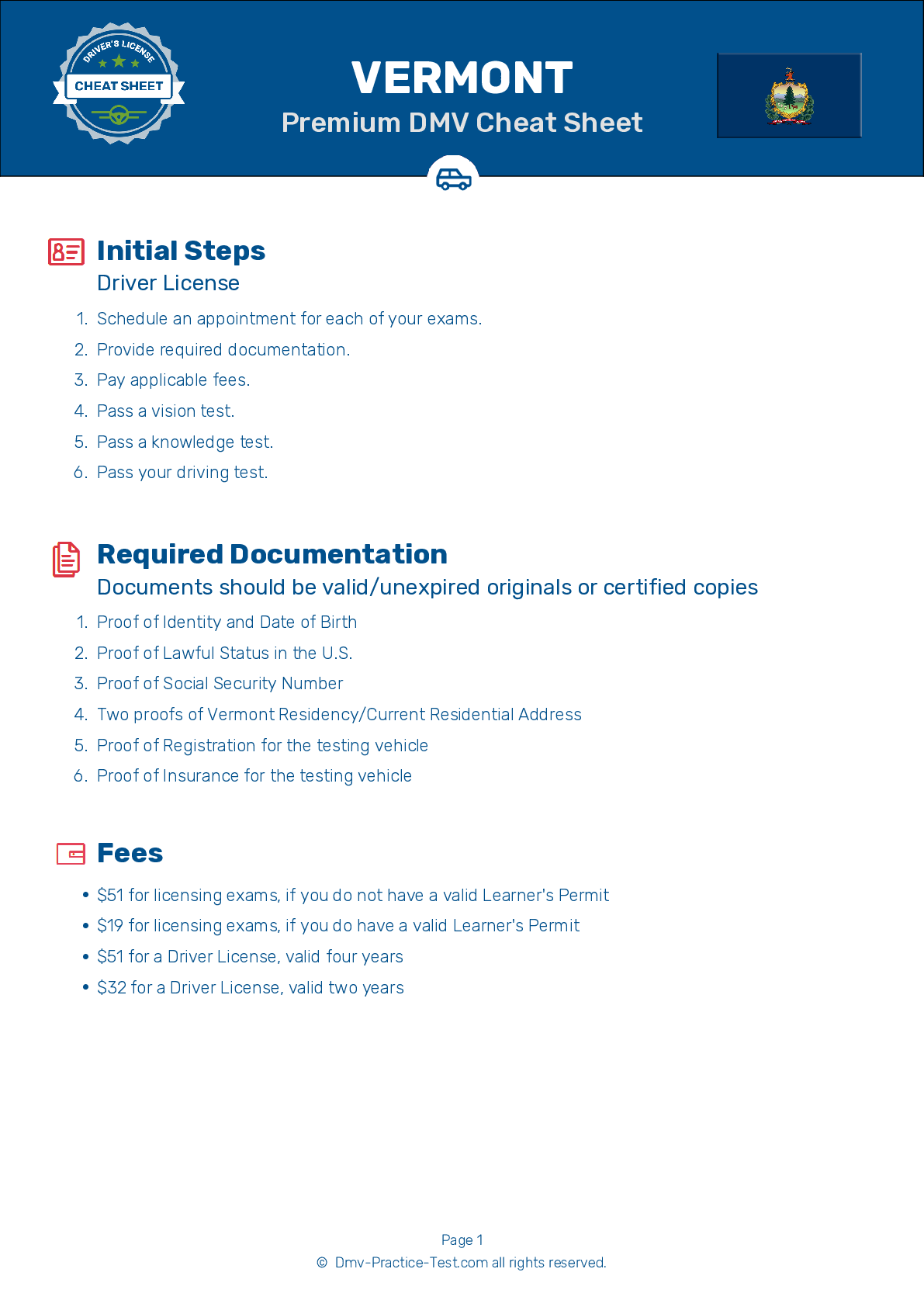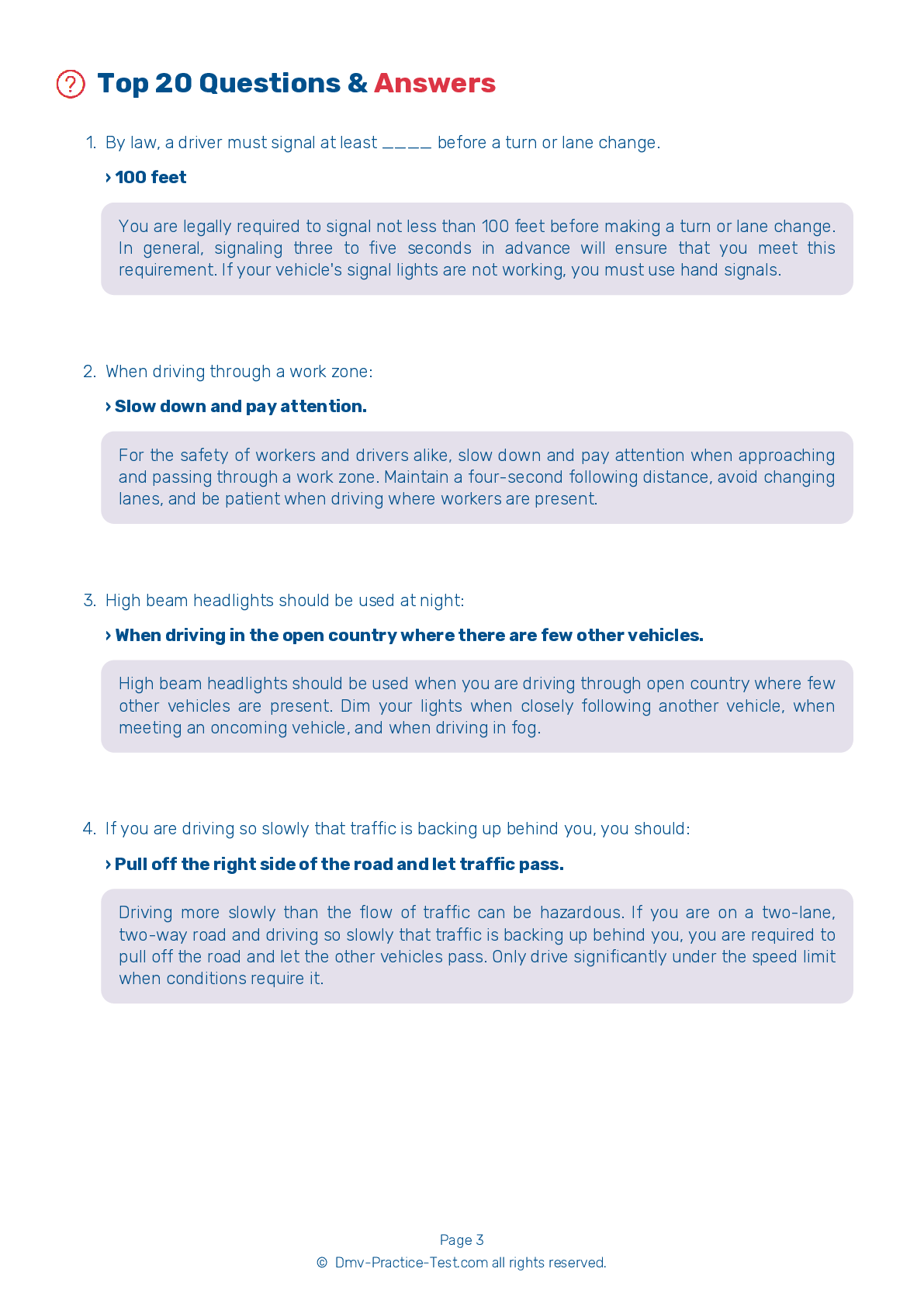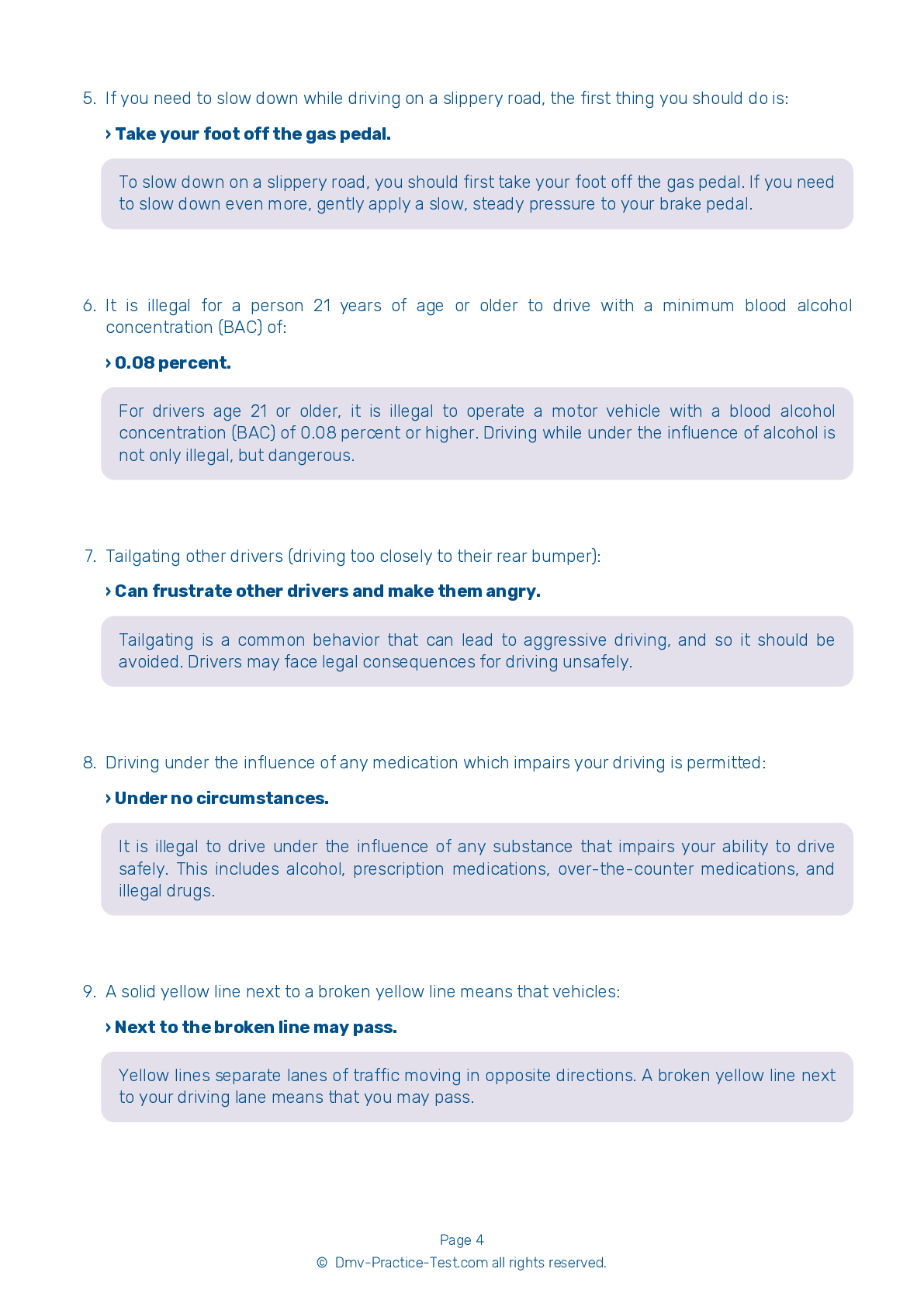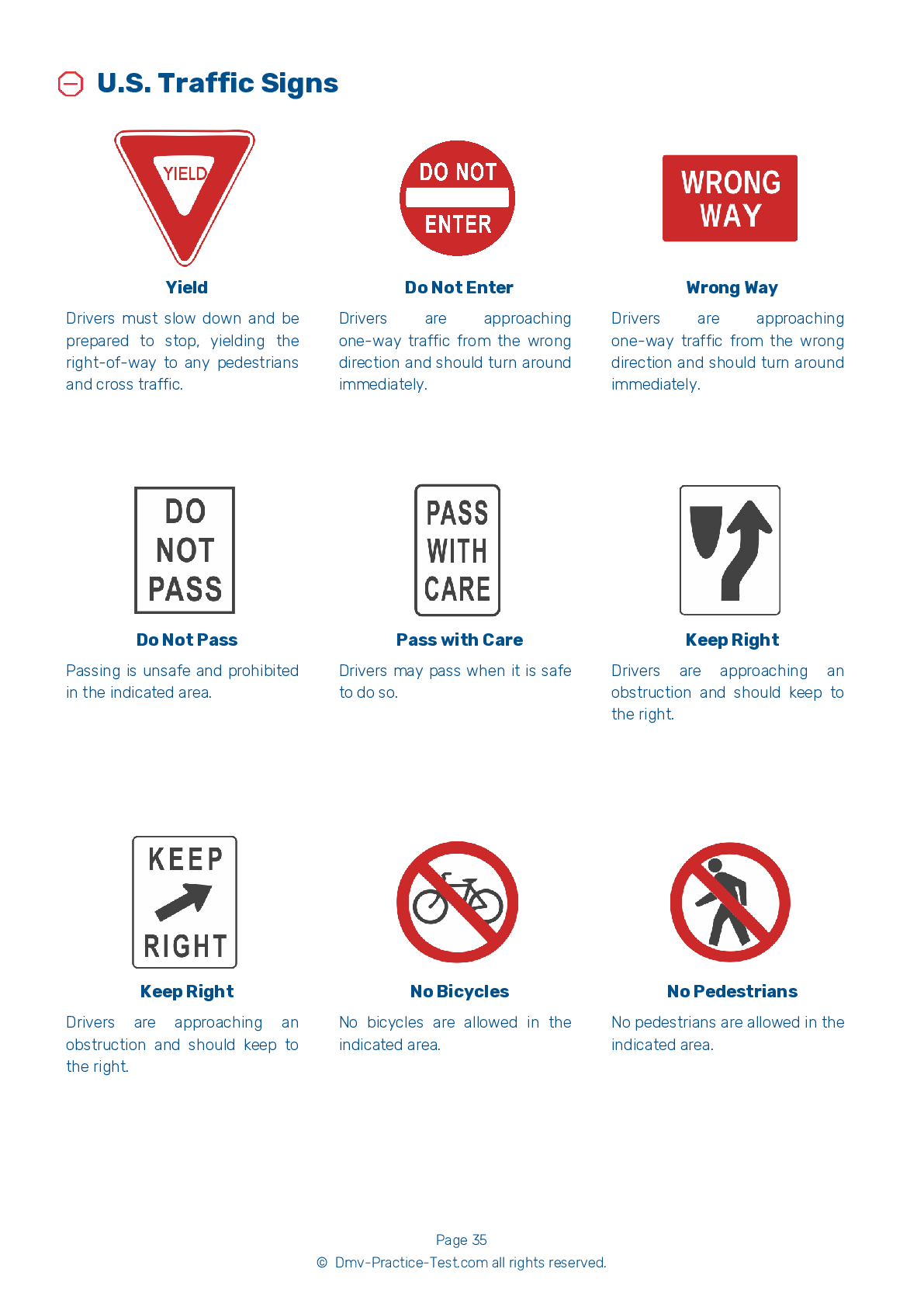FREE Vermont DMV Practice Test #24 Page 2 of 3
The Vermont DMV practise examinations have been updated for January 2025. It includes questions based on the Vermont Driver Handbook's most significant traffic signals and legislation for 2025. Use actual questions that are very similar (often identical!) to the DMV driving permit test and driver's licence exam to study for the DMV driving permit test and driver's licence exam.
On the practise exam, each question gets a tip and explanation to help you remember the concepts. The written component of the official Vermont DMV test will include questions about traffic rules, traffic signs, and driving statutes, as well as knowledge from the Driver Handbook.
To obtain a passing grade, you must correctly answer 16 of the 20 questions. Use the practise exam provided by the Vermont Department of Motor Vehicles to help you prepare for your instruction permit or driver's licence.
The DMV exam is available in several languages.
Using any kind of testing assistance will result in an automatic fail, and the DMV may take additional action against your driver's licence, so stay away from it.
7 . At a railroad crossing, a motorist:
When stopping at a railroad crossing, you must stop at least 15 feet from the nearest rail. Come to a complete stop if you can see a train or hear its whistle, if there is a stop sign, or if flashing lights, lowered gates, or a flagger indicate that a train is approaching. It is illegal to drive through, around, or under a lowered gate.
8 . You may honk your horn when you:
One situation where it is appropriate to use your horn is if you lose control of your vehicle. In this case, sound your horn to alert other drivers.
9 . Driving at night requires increased caution because:
Because it is dark, drivers cannot see as well at night as they can during the day. From one half hour after sunset until one half hour before sunrise, or at any other time when persons or vehicles are not visible for 500 feet, drivers must use their headlights.
10 . This sign means:

Regulation signs regulate traffic speed and movement, displaying rules which drivers must obey. Wherever this regulation sign is posted, U-turns are not permitted.
11 . You are stopped in a line of vehicles waiting at a stop sign. If there is no cross traffic after the vehicles ahead have passed through the intersection, you:
You must always bring your vehicle to a complete stop and yield to approaching traffic before proceeding past a stop sign. Don't feel pressured by surrounding traffic to avoid making a complete stop.
12 . When approaching a traffic signal displaying a steady green arrow, drivers:
A green arrow displayed on a traffic signal tells drivers that they may turn in the direction of the arrow. You must be in the proper lane for such a turn. Yield the right-of-way to vehicles and pedestrians already in the intersection.
13 . This sign means:
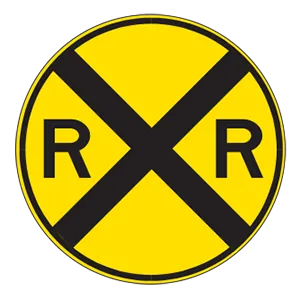
Circular traffic signs indicate upcoming railroad crossings. This sign tells drivers that they are approaching a railroad crossing and should be looking for signs of an oncoming train.
See the exact questions that will be on the 2025 Vermont DMV exam.
99.2% of people who use the cheat sheet pass the FIRST TIME
LT gives us an insight on how the cheat sheet provided her with all the study questions she needed before taking her test.
Joe initially studied with the handbook and failed his test, he eventually found us online, studied and pass his test the first time around.
2025 Vermont | Frequently Asked Questions
1. Not checking mirrors and blind spots before changing lanes or turning.
2. Speeding or driving too slowly for the conditions or posted speed limit.
3. Not coming to a complete stop at stop signs or red lights.
4. Incorrect signalling or not signalling at all.
5. Poor parking, especially parallel parking.
Remember, practice makes perfect, so take time to hone your skills.
